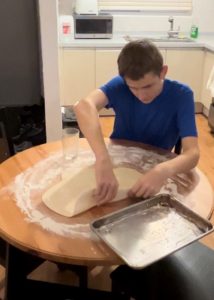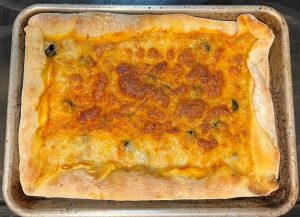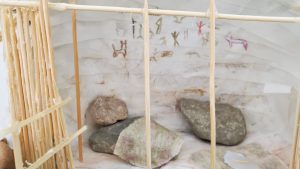IVLA is thrilled to announce the winners of our Middle School History Fair! We learned so much from each of the entries we received. Thank you to all of the students who submitted their work and chose interesting topics that taught us something new about the past! Please enjoy the winning submissions below.
History Fair Winners
1st Place: Colton W. - 7th Grade
Discovery of Bread
Why I feel this discovery is important to History:
Bread is used in so many people's favorite food. Such as pizza, the food I'm using to represent the subject of bread.
Describe your project: My project will be in the food section. The project will cover the earliest form of bread, along with how bread became used in pizza.
Recipe
-Website: simplyrecipes
Name of recipe: Homemade Pizza & Pizza Dough
INGREDIENTS FOR PIZZA DOUGH
1 1/2 cups (355 ml) warm water (105°F-115°F)
1 package (2 1/4 teaspoons) active dry yeast
3 3/4 cups (490g) bread flour
2 tablespoons extra virgin olive oil (omit if cooking pizza in a wood-fired pizza oven)
2 teaspoons kosher salt
1 teaspoon sugar
For making the pizza and toppings
INGREDIENTS FOR TOPINGS
I used:
-Extra virgin oil
-Tomato sauce
-Italian four cheese
-sliced black olives
-flavorgod seasoning
-Parsley flakes
Bread is a topic that most people probably don’t regularly talk about in their everyday lives. Although the question, “who even invented bread?” may come up as a random thought, it’s not actually as simple as it may seem. Unlike most food such as Peanut Butter or Ice Cream, Bread wasn’t invented by a single person. It gradually became its modern form. The oldest bread loaf on record was made about 12,000 years ago. It was most likely made from crushed grain mixed with water, the dough laid on a heated stone, and baked by covering the dough in hot ashes.
For thousands of years, bread used to be unleavened, which means that the bread was baked without yeast. Unleavened bread is flatbread. Yeast allows the bread to rise up and look more like the bread you are probably used to eating with a sandwich. The first account of leavened bread dated back to ancient Egypt around 1400 BCE. Around 800 BCE, the Egyptians taught the Greeks about adding yeast to bread, which allowed the Greeks to spread the idea of leavened bread all over Europe.
Foods that are very close to pizza have been made throughout history. People were adding ingredients to bread to make it taste better. In the 6th century BCE, Persian soldiers served Darius the Great baked flatbreads with cheese and dates inside. Like bread, pizza has evolved over the years into modern pizza.


The top photo is when I was putting the dough into the pan. The photo below is the final result of the pizza.
It turns out I accidentally made a Chicago style cheese stuffed crust pizza. It tasted really cheesy.
2nd Place: Sophia S. - 6th Grade
Discovery of the Neolithic Period
The neolithic period is the last stage of the stone age.
This was when the homo sapiens (early humans) learned to domesticate plants and animals!
Domestication means training plants and animals for human uses, such as wool, fur, vegetables, and meat.
Some animals they domesticated are sheep, goats, pigs, and cows.
Before domestication, homo sapiens had to hunt animals.
This means they couldn't be in a permanent place because they had to follow the animals.
In the Neolithic period, homo sapiens learn how to farm and grow crops.
Because of domestication, homo sapiens could settle down in permanent Villages.
This meant they could have stuff, such as pottery.
The neolithic period is famous for its pottery.
They also started weaving; weaving is the oldest craft. Homo sapiens twisted branches and twigs together to make baskets and threads for building their houses.
Homo sapiens still used stone tools, but they were more improved.
In the Neolithic period, homo sapiens started to build their houses.
Some houses were made from reed, mud bricks, and wood.
The Materials I used in this project:
Wooden sticks. Coloring pencils.
Stone.
Tinfoil.
Animal figures.
Rocks.
Fabric.
Markers.
Modeling clay.
duct tape.


3rd Place: Ellah S. - 7th Grade
Discovery of Recipes from the 1800's


